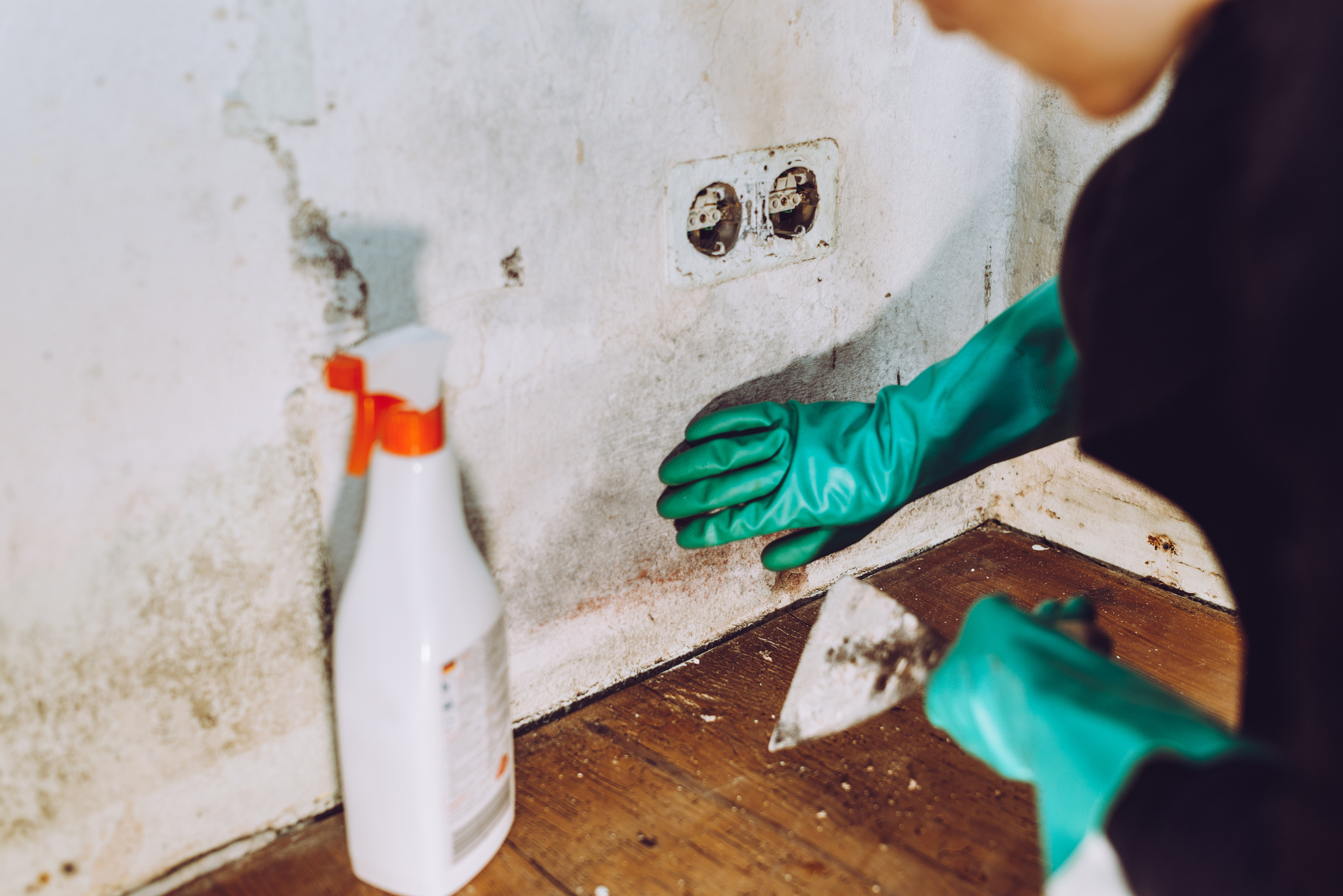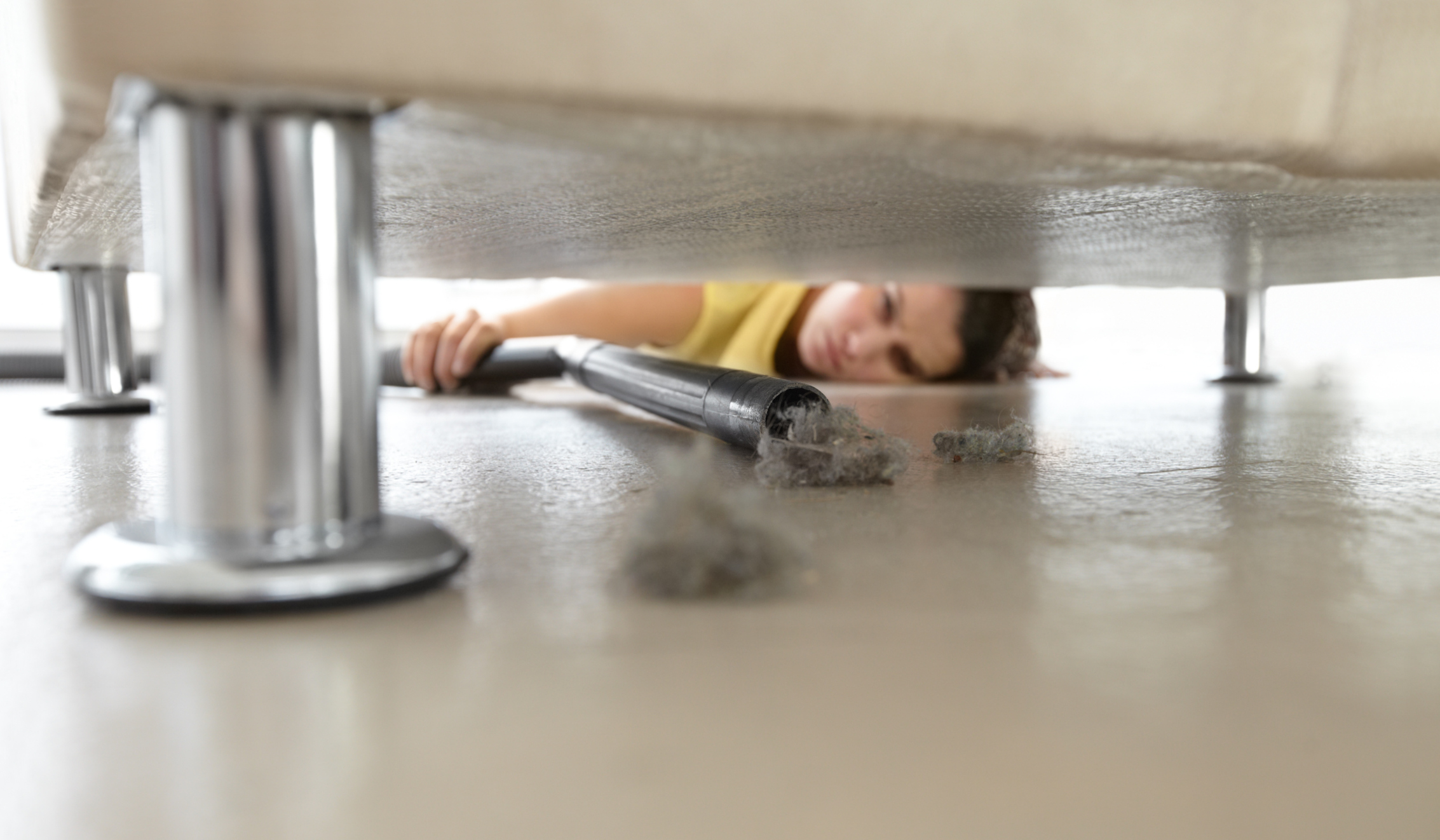

We may earn revenue from the products available on this page and participate in affiliate programs. Learn More ›
Your home is the one place where you can feel calm and comfortable, but if you are sneezing and coughing every time you walk through your front door, it can quickly become more frustrating than ever. If this is the case, you might be dealing with house allergies.
Millions of people suffer from symptoms caused by indoor allergens, according to the American Academy of Allergy Asthma & Immunology. This may include rhinitis symptoms like sneezing, runny nose, congestion, itchy throat, and watery eyes; asthma symptoms like coughing and wheezing; or hives and rashes.
A number of household irritants could cause allergy symptoms, so it’s important to figure out exactly what is triggering these reactions. Besides removing the specific allergen from your house, using a reputable air purifier—like this highly rated option available at Amazon, the top pick in our guide to the best air purifiers—can help minimize the effects of some of the most common household allergens.
Mold
Mold growing in your house can produce airborne spores that trigger an allergic reaction, including a runny nose, nasal congestion, wheezing, itchy eyes or throat, coughing and sneezing, headaches, and a skin rash. Indoor mold typically grows in damp areas such as basements, bathrooms, kitchens, and anywhere water is found.
Check for visual signs of mold and the musty or earthy odor typically accompanying mold. Be sure to test for mold if you aren’t sure of the indoor source. If you spot mold, wear a mask and try to get rid of it immediately with water, detergent, and 5 percent bleach. It is also a good idea to hire a professional to have it removed safely.
Here are some ways to prevent mold from growing in your home:
- Repair and seal leaking pipes and dripping faucets.
- Use a dehumidifier in the basement and other damp areas.
- Purchase a humidity monitor to keep an eye on humidity levels.
- Ensure adequate ventilation in all rooms.
- Use exhaust fans and air out your home by opening doors and windows.
- Install a certified filter in the central heating and air conditioning unit in your home.

Plants
Houseplants purify the air and are incredibly uplifting and beneficial to our well-being, but some produce pollen and spores that can cause allergic reactions. Therefore, it’s best for those who are susceptible to limit exposure to plants and flowers inside the home to avoid a runny nose, itchy eyes, and even asthma. Some people even get a rash from handling certain plants.
If you aren’t sure whether houseplants are causing your symptoms, try removing them for a few weeks and see if that helps. Avoid ferns, figs, orchids, palms, and chrysanthemums, as they are the worst plants for people with allergies. Also, stay away from plants with fuzzy leaves (like African violets) since they easily trap allergens in their foliage.
Instead, choose plants with smooth leaves that you can wipe down or mist regularly to keep dust and pollen at a minimum. Peace lily, Chinese evergreen, Dracaena, and Mother-in-law’s tongue are known to be hypoallergenic and shouldn’t trigger allergic reactions.
Dust
Microscopic arthropods might be lurking in your house, causing house allergies. These dust mites feed off of tiny flakes of shed human skin and thrive in warm, humid environments. They are often found in carpeting, bedding, draperies, and upholstered furniture.
About 8 out of 10 people in the United States are exposed to dust mites at any given time, says the Asthma and Allergy Foundation of America, so dust mites could be the reason for your allergies.
Here are some ways to prevent dust mites in your house:
- Keep surfaces in your home clean and uncluttered.
- Vacuum weekly with a model that has a certified asthma and allergy filter.
- Place allergen-proof fabric covers or airtight zippered plastic covers over mattresses and pillows.
- Wash your bedding in hot water and dry in a hot dryer weekly.
- Reduce the amount of carpeting and rugs in your home.
- Use specialized filters on your central air conditioner.
- Keep humidity low by using a dehumidifier or air conditioning.
- Replace drapes and blinds with roll-down shades or washable curtains.

Chemicals
Another common allergen found in homes stems from all the chemicals we use, such as cleaning supplies, air fresheners, bug spray, soaps, chlorine bleach, polishes, and more. Many of these products contain harmful or irritating chemicals that can trigger headaches, respiratory symptoms, and allergy symptoms like itchy and watery eyes.
Try these tips to help keep chemicals to a minimum:
- When using any cleaning or household products, keep the room well ventilated by opening windows and doors.
- Avoid spraying any chemicals in the air inside your home.
- Choose unscented laundry products.
- Use only unscented, nontoxic cleaners at home.
- Avoid products with ammonia, formaldehyde, volatile organic compounds (VOCs), sulfuric acid, fragrances, and flammable ingredients.
- Never use air fresheners.
- Use DIY cleaners like vinegar and baking soda instead.

Pests
Pests roaming throughout your house—such as cockroaches, rodents, and insects—could also be triggering your allergies and asthma. As it turns out, some people are allergic to the proteins found in animal saliva, skin, fur, urine, or droppings. You will be able to tell if you have rodents by their droppings near your food supply or if you hear scurrying in the walls.
Fruit flies and stink bugs also can trigger allergies. Fruit flies search for food and take bacteria from rotted fruits or spoiled food with them. They can cause respiratory issues and red bumps on the skin from the diseases they carry. Finally, stink bugs produce an odorous chemical that can cause symptoms like a stuffy nose, runny nose, pink eye, or dermatitis.
Take these steps to eliminate pests in your home:
- Seal all areas where pests can enter the home, including crevices, wall cracks, and windows.
- Repair leaky faucets and pipes since cockroaches and other pests come inside for water.
- Keep food stored in tightly sealed containers.
- Vacuum and sweep the floor after meals.
- Keep lids on garbage containers.
- Do not leave dirty dishes or pet bowls out.
- Wipe off kitchen surfaces and cupboards regularly.
- Remove clutter to reduce the number of hiding spots for pests.
- Use bait and traps or hire an exterminator to control the pests in your home.
